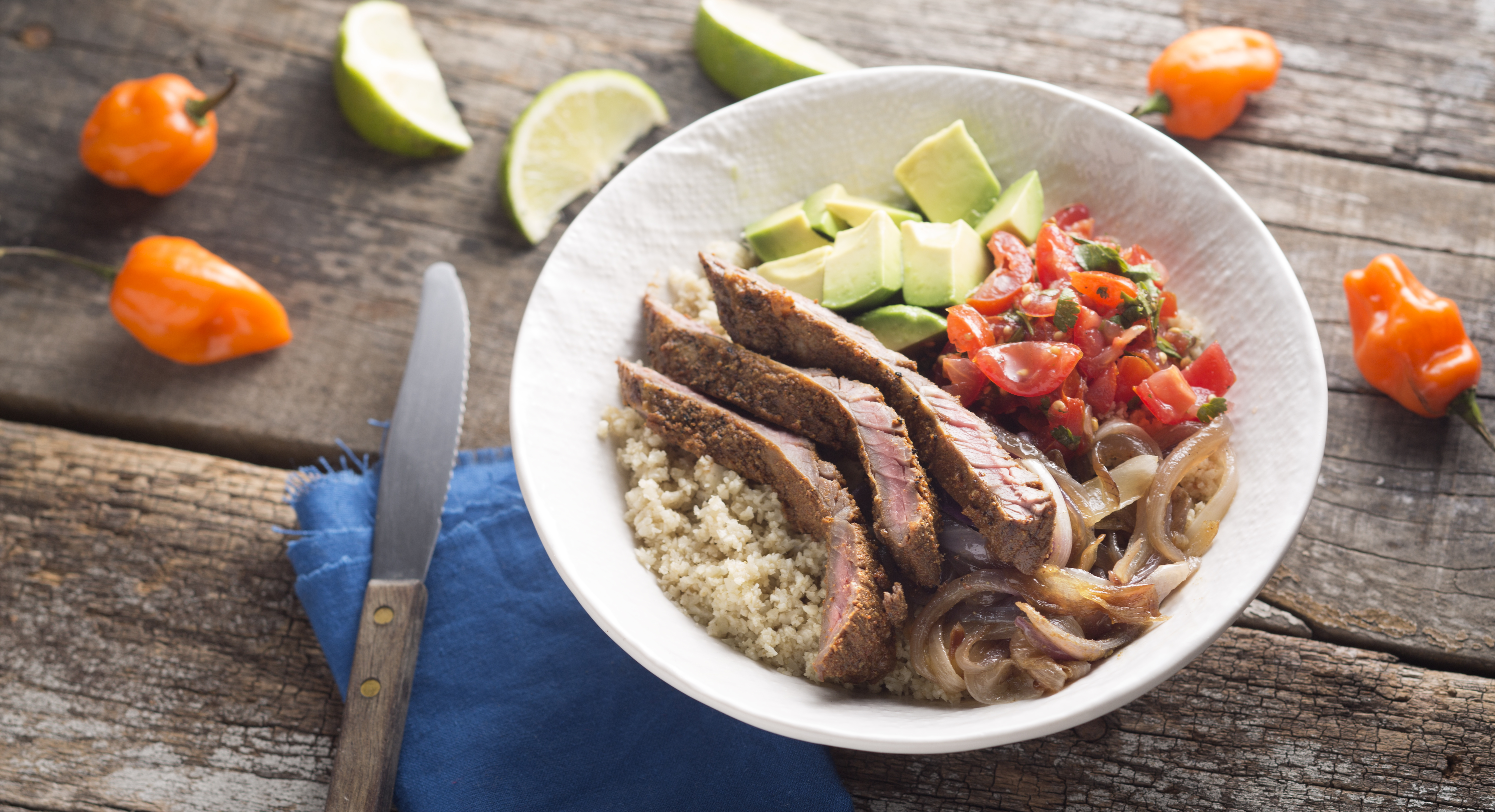With grilling season underway, we couldn’t think of a better time to round up the best advice about all things beef. As you can imagine, there are some pretty serious home cooks working at Thrive Market, so we turned to our colleagues to get input on favorite cuts, outstanding recipes, and surefire serving tips. We hope it gives you some ideas for your next meal.
Ground Beef
Senior Data Analyst Lauren, who loves to cook for large family gatherings, always adds ground beef to her family’s favorite tomato sauce. “We have it most often with zoodles, but I’ll make spaghetti for a special treat once in a while,” she says.
Try It: Thrive Market 100% Grass Fed Beef
Our pasture-raised ground beef is 85 percent lean, making it an ideal choice for favorite dishes like burgers, pasta sauce, and meatballs.
Best Burger
Start with a pound of our ground beef then add some simple seasonings like garlic powder, black pepper, and Worcestershire sauce for maximum flavor.
Italian Meatballs
Just like grandma used to make! Serve these up with a tangle of spaghetti at your next Sunday supper and you’ll be starting the week off right.
New York Strip
Retention Manager Michelle loves New York strip steak because it’s a thicker cut. “I learned from J. Kenji López-Alt to cook them in cast iron, one minute on the first side then flipping every 30 seconds until they’re medium rare,” she says. On the side, she likes to serve a sautéed or roasted veggie using this Asian-inspired marinade from Emeril Lagasse. Another great way to cook New York strip comes courtesy of Senior Creative Project Manager Jen, who favors a reverse-sear approach. “Start low in the oven and finish it off in a cast-iron skillet on the grill. Serve it with either charred broccolini with lemon and chili flakes or a kale salad—and a glass of cabernet.”
Try It: Thrive Market 100% Grass-Fed New York Strip Loin Steak
This cut comes from the top of the short loin and is known for its tight grain and slightly dense texture—perfect for throwing on the grill.
Grain-Free Burrito Bowl
Skip the carbs and swap in cauliflower rice for the base of this hearty bowl. New York strip, skirt, or flank steaks all work well here—just be sure to cut against the grain to keep every bite tender.

Ribeye
When you ask three Thrivers to weigh on on the best way to cook a ribeye steak, you’ll get three different answers. Retention Manager Casey loves to sauté this cut in ghee with mushrooms, onions, and broccolini. VP of Member Services Doug slices it and grills it on a skewer that’s served alongside rice and veggies, while Executive Assistant Yasmine cooks it straight in a hot pan.
Try It: Thrive Market 100% Grass-Fed Ribeye
This steak has many monikers like Delmonico steak, Spencer steak, and beauty steak. Regardless of what you call it, this cut comes from the center of the rib steak and is extra flavorful thanks to its signature marbled fat.
Pan-Seared Ribeye Steak
You can’t go wrong with a simple grilled steak. After searing, use a blend of herbs, shallots, and butter finish it off in the pan.

Ribeye With Cherry Steak Sauce
This sweet recipe marries perfectly cooked steak with a cherry-infused steak sauce. Tomato paste, cumin, and apple cider vinegar are some of the secret ingredients that bring it all together.
Skirt Steak
When it’s steak night at Senior Graphic Designer Andrea’s house, she alternates between carne asada or grilling skirt steak that’s been doused in a balsamic vinegar marinade. It adds the perfect flavor when served over a bed of greens with cherry tomatoes.
Try It: Thrive Market 100% Grass-Fed Skirt Steak
Skirt steak is typically the top choice for dishes like salads, stir-frys, and fajitas. It cooks up quickly (making it a weeknight dinner time-saver) and is great at soaking up marinades for rich flavor every time.
Peruvian Beef Stir-Fry
You’ll love this traditional Peruvian stir-fry known as lomo saltado. The recipe is from popular Los Angeles chef Ricardo Zarate, who loves serving comforting homestyle dishes to hungry diners.
Chuck Roast
For a satisfying dish, Member Services Team Lead Lanae turns to pot roast. “First, sauté onions and garlic, deglaze with red wine, add beef broth, thyme, onions, and rosemary, then pour it over seared chuck roast and cook it low and slow for about two to three hours. Then, add some Yukon Gold potatoes and continue to let it cook for another two hours. Voila! Yummy pot roast.”
Try It: Thrive Market 100% Grass-Fed Chuck Roast
Cut from the shoulder, chuck roast boasts a silky texture that falls off the bone when cooked low and slow.
Slow Cooker Pot Roast
This easy recipe is practically fool-proof with melt-in-your-mouth results. The sauce, which is made with onions, tomato paste, fresh thyme, and bone broth, will get rave reviews from every member of the family.
